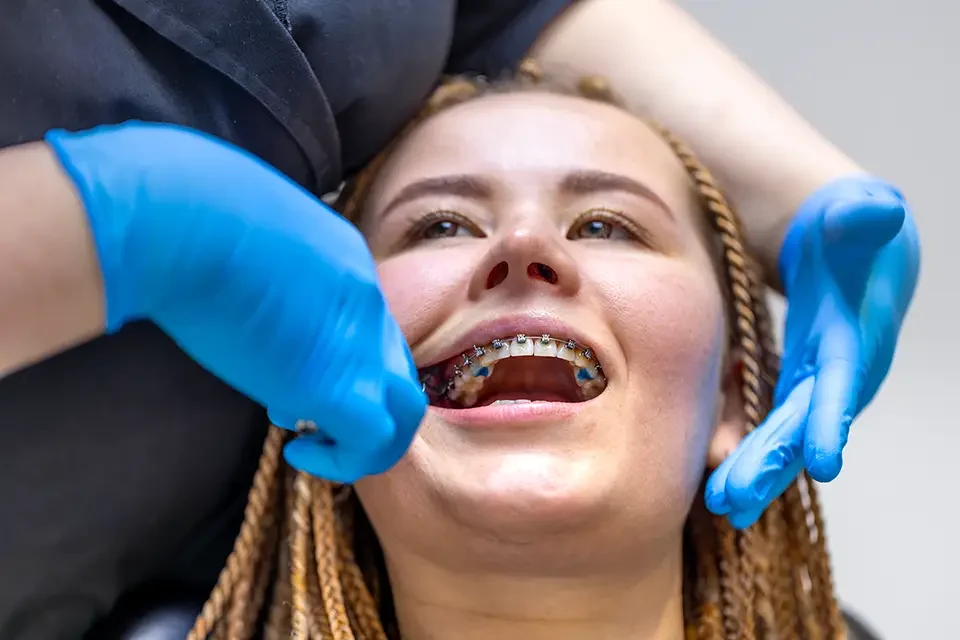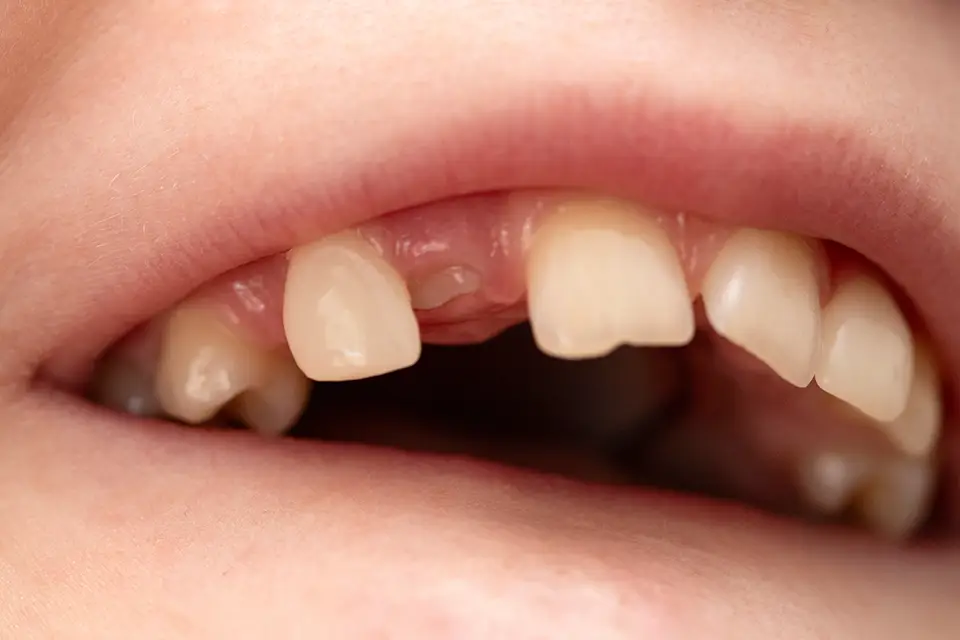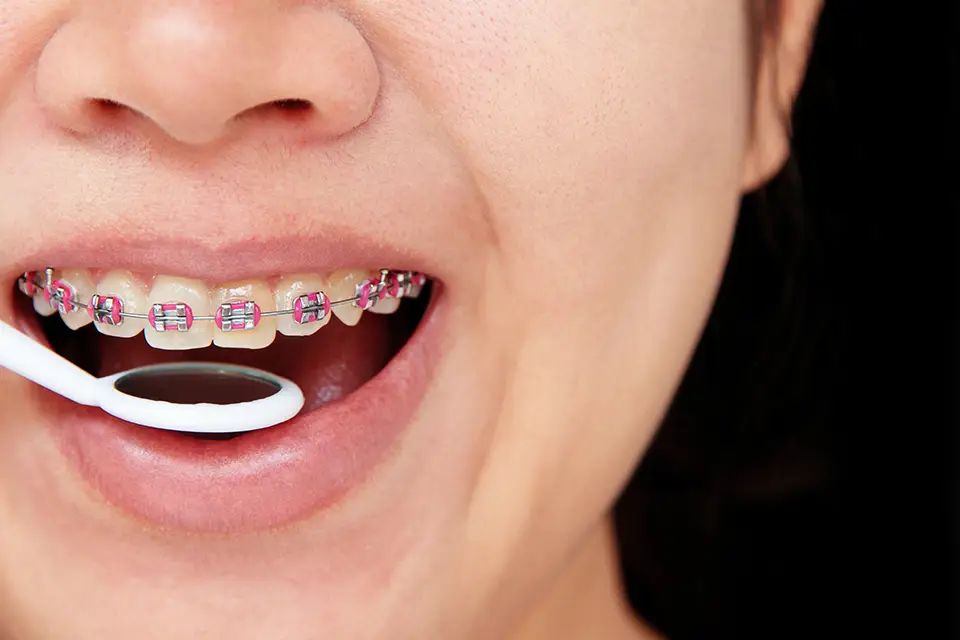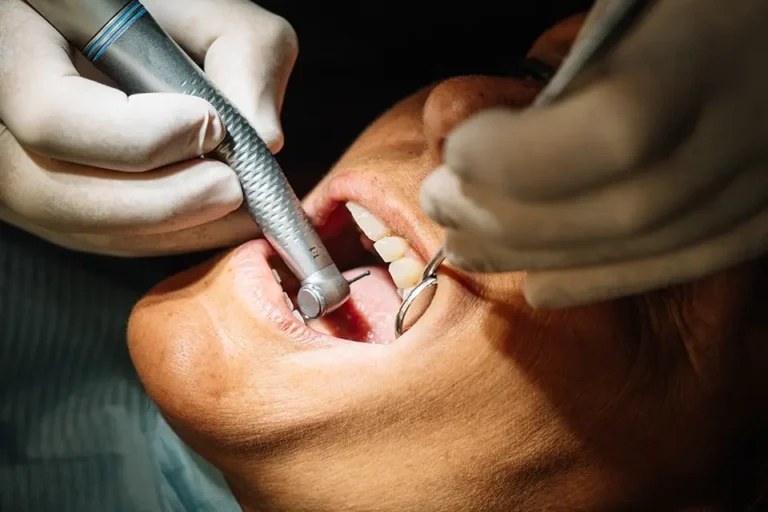Porcelain braces, or ceramic braces, are a sought-after orthodontic treatment option. What sets them apart is their clear or tooth-colored brackets, which blend in with the teeth, making them less noticeable than traditional metal braces.
In today’s world, aesthetic considerations are crucial in orthodontics, especially for adults. Many adults seek treatments that enhance their smiles without the conspicuousness of metal braces. Moreover, porcelain braces offer a discreet and effective solution, aligning teeth while maintaining a visually appealing appearance.
What are Porcelain Braces?
They are orthodontic devices that dentists use to treat misaligned teeth and bite problems. They consist of brackets made from ceramic material that closely matches the natural color of teeth.
Porcelain braces and traditional metal braces share similar functionality, but their appearance differs. While metal braces use shiny metallic brackets, porcelain ones feature ceramic brackets that are either clear or tooth-colored, making them less visible.
Porcelain ones consist of several key components:
- Brackets: Ceramic brackets that are bonded to the teeth.
- Archwires: These wires attach the brackets and apply pressure to reposition the teeth.
- Ligatures: Small rubber bands or clips that hold the archwire in place on the brackets.
- Bands: Metal rings that can be inserted around the molars to provide additional support.
How Do Porcelain Braces Work?
They work by progressively shifting teeth into the desired position by applying consistent pressure over time. The dentist secures the brackets to the teeth with a special adhesive and threads the archwires through them. In addition, the archwire guides the teeth into proper alignment by exerting pressure as it is periodically tightened.
There are numerous similarities between porcelain and metal braces regarding treatment duration and functionality. Both types use brackets and wires to move teeth. Porcelain ones, on the other hand, are less apparent because of their color-matching capabilities. They are also smoother and less likely to irritate the gums and cheeks.
Advantages and Disadvantages of Porcelain Braces
Advantages
- Aesthetic Appeal: One of the most significant benefits of porcelain braces is their clear or tooth-colored appearance, which makes them less visible than metal braces.
- Effectiveness in Treating Various Orthodontic Issues: They are highly effective in treating many orthodontic problems, from minor misalignments to more complex dental issues.
- Comfort and Fit: Porcelain braces are often smoother than metal, lowering the risk of gum and inner cheek irritation.

Disadvantages
- Cost Comparison with Other Braces: They are often more expensive than traditional metal braces due to the materials used and the additional time necessary for adjustments.
- Staining Potential and How to Prevent It: The ceramic brackets may discolor if not properly cared for. Dentists advise patients to follow good oral hygiene practices and refrain from consuming foods and beverages that can cause discoloration, such as coffee, tea, and red wine.
- Durability and Risk of Damage: While porcelain braces are generally long-lasting, the ceramic material is more fragile than metal and can crack or chip under strain. Patients must be cautious and avoid hard or sticky foods that could damage the brackets.
Cost of Porcelain Braces
The cost of porcelain braces can vary greatly, but they typically range from $3,000 to $8,000. This is higher than the cost of traditional metal braces, which usually range from $2,000 to $6,000.
Several factors can affect the cost of porcelain braces:
- Location: The cost varies depending on the area’s geographic location and average prices.
- Case Complexity: More complex orthodontic issues may necessitate longer treatment times and additional adjustments, raising the overall cost.
- Orthodontist’s Expertise: The specialized skills and reputation of highly experienced orthodontists may result in a higher price for their services.
FAQs
Do porcelain braces stain easily?
Porcelain brackets can stain if not cared for properly, although good oral hygiene and avoiding staining foods help to prevent this.
Are porcelain braces more expensive than metal braces?
Yes, they are typically more costly due to the cost of materials and the additional care necessary.
How long do porcelain braces take to work?
The treatment duration is similar to metal braces, typically 18 to 36 months.
Can porcelain braces treat all orthodontic issues?
Yes, they effectively treat many orthodontic problems, from minor misalignments to complex cases.
Porcelain braces balance aesthetics and functionality, making them popular for people seeking discrete orthodontic treatment. While they come with higher costs and potential drawbacks, their benefits often outweigh these concerns for many patients.
Ready to transform your smile with the aesthetic appeal and comfort of porcelain braces? Please schedule a consultation with our experienced team today. Contact Zara Dental in Houston, Texas, to learn how porcelain braces can benefit you and start your journey toward a healthier, more beautiful smile!








